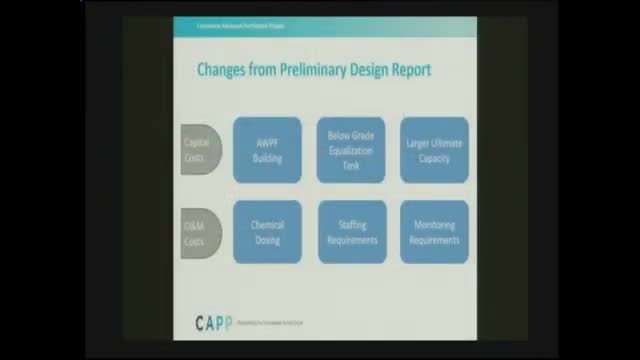AWPF outlines revised $70.9 million project costs and staffing needs
April 11, 2024 | Carpinteria City, Santa Barbara County, California

This article was created by AI summarizing key points discussed. AI makes mistakes, so for full details and context, please refer to the video of the full meeting. Please report any errors so we can fix them. Report an error »

The Carpinteria Valley Water District held a crucial meeting on April 10, 2024, focusing on the operational and financial aspects of the Advanced Water Purification Facility (AWPF). As the district prepares to enhance its water treatment capabilities, discussions highlighted the need for additional staffing, revised cost estimates, and innovative engineering solutions to manage expenses effectively.
One of the key points raised was the anticipated staffing requirements for the AWPF. Initially projected to need two additional staff members, the district now estimates that four will be necessary to operate the facility efficiently. This adjustment reflects the growing complexity of the facility's operations and the increased monitoring requirements that have emerged from recent Integrated Water Resource Management (IWRM) projects.
The meeting also addressed significant updates to the capital cost estimates for the AWPF, which now stand at approximately $70.9 million. This figure encompasses both construction and soft costs, including design and management expenses. The increase in costs is attributed to inflation and changes in project scope, particularly regarding the facility's infrastructure and compliance needs.
To mitigate these rising costs, the district has engaged in a value engineering effort, collaborating with design engineers to identify potential savings. Initially, nearly 50 concepts were proposed to reduce capital and operational costs, which have since been narrowed down to 12 key ideas. These strategies aim to save approximately $3.5 million while maintaining the facility's operational integrity.
Among the proposed changes are modifications to the building's size and the relocation of certain processes to optimize space. The district plans to implement a helical anchor system for ground improvements, which is less intensive than previous methods, and to reduce the size of the conveyance pipeline. These adjustments are designed to balance cost savings with operational efficiency.
The meeting concluded with a discussion on the phased approach to the AWPF's design, which may involve reducing the facility's output capacity. This strategy could lead to further reductions in capital costs by decreasing the number of required injection and monitoring wells.
Overall, the discussions at the Carpinteria Valley Water District meeting underscore the importance of strategic planning and resource management as the district moves forward with its water purification initiatives. The next steps will involve finalizing the revised cost estimates and implementing the proposed engineering solutions to ensure the successful operation of the AWPF.
One of the key points raised was the anticipated staffing requirements for the AWPF. Initially projected to need two additional staff members, the district now estimates that four will be necessary to operate the facility efficiently. This adjustment reflects the growing complexity of the facility's operations and the increased monitoring requirements that have emerged from recent Integrated Water Resource Management (IWRM) projects.
The meeting also addressed significant updates to the capital cost estimates for the AWPF, which now stand at approximately $70.9 million. This figure encompasses both construction and soft costs, including design and management expenses. The increase in costs is attributed to inflation and changes in project scope, particularly regarding the facility's infrastructure and compliance needs.
To mitigate these rising costs, the district has engaged in a value engineering effort, collaborating with design engineers to identify potential savings. Initially, nearly 50 concepts were proposed to reduce capital and operational costs, which have since been narrowed down to 12 key ideas. These strategies aim to save approximately $3.5 million while maintaining the facility's operational integrity.
Among the proposed changes are modifications to the building's size and the relocation of certain processes to optimize space. The district plans to implement a helical anchor system for ground improvements, which is less intensive than previous methods, and to reduce the size of the conveyance pipeline. These adjustments are designed to balance cost savings with operational efficiency.
The meeting concluded with a discussion on the phased approach to the AWPF's design, which may involve reducing the facility's output capacity. This strategy could lead to further reductions in capital costs by decreasing the number of required injection and monitoring wells.
Overall, the discussions at the Carpinteria Valley Water District meeting underscore the importance of strategic planning and resource management as the district moves forward with its water purification initiatives. The next steps will involve finalizing the revised cost estimates and implementing the proposed engineering solutions to ensure the successful operation of the AWPF.
View full meeting
This article is based on a recent meeting—watch the full video and explore the complete transcript for deeper insights into the discussion.
View full meeting
